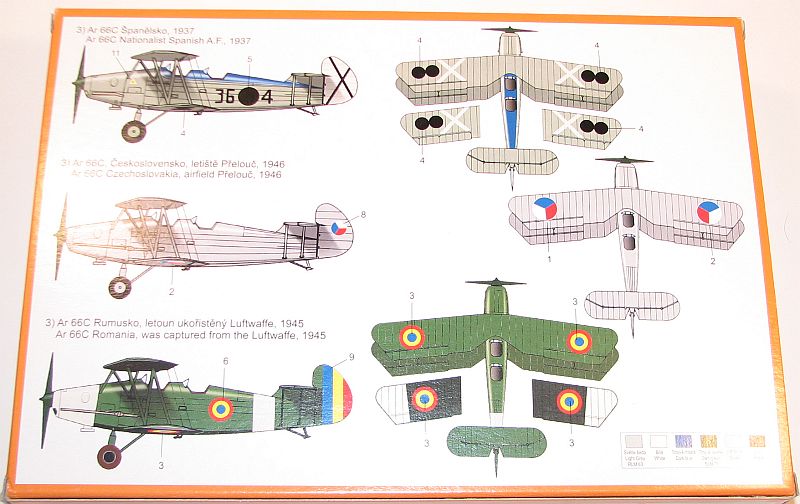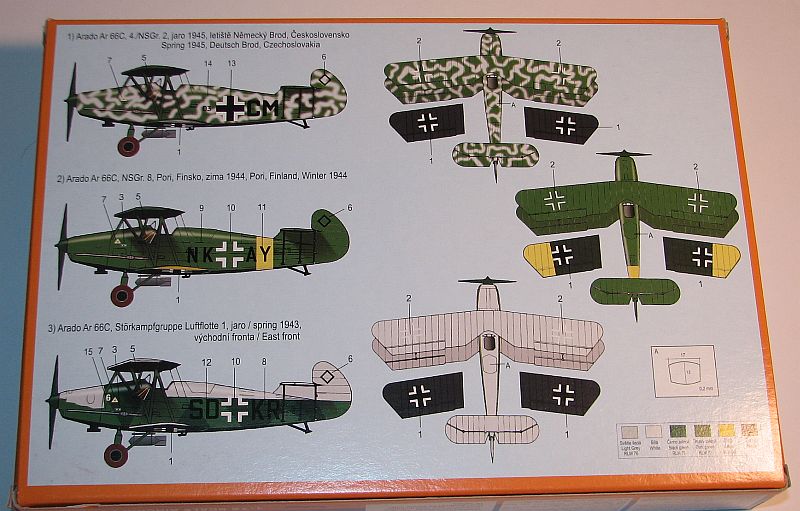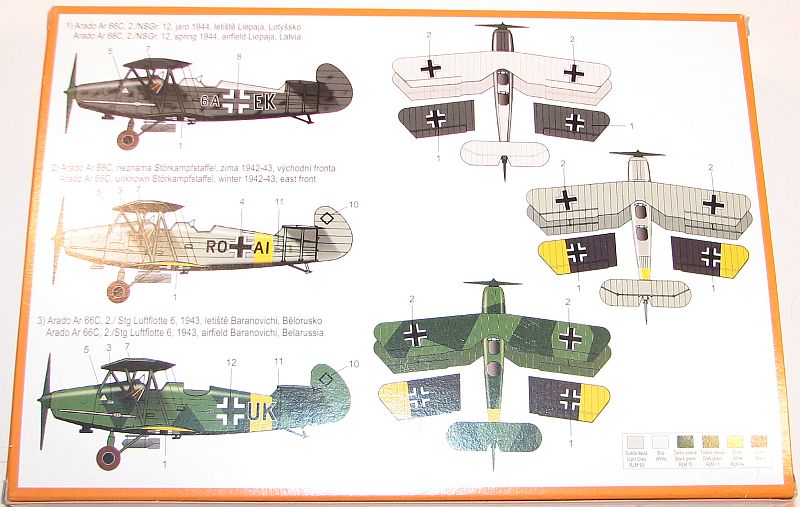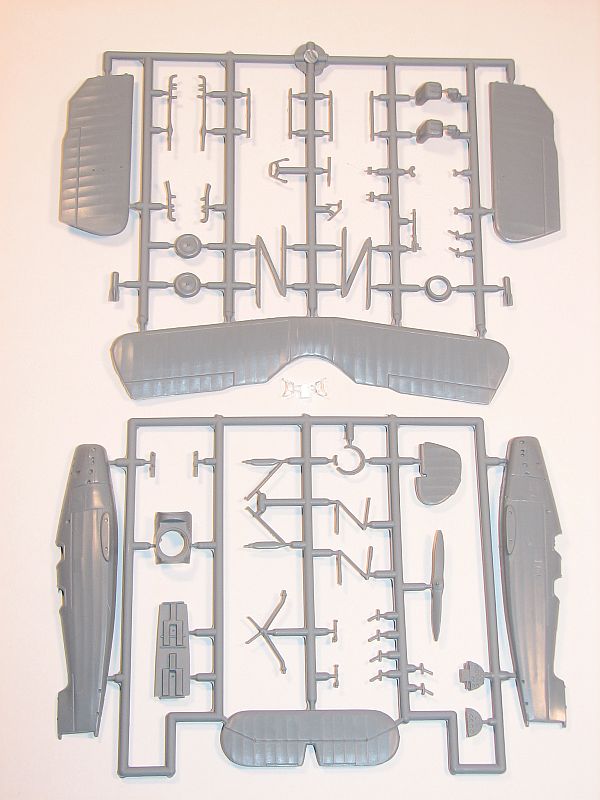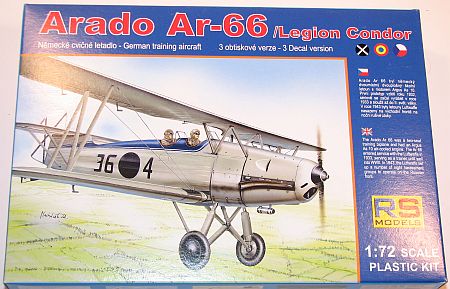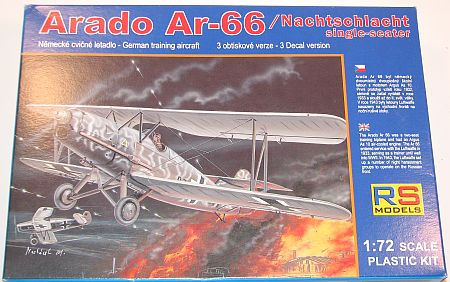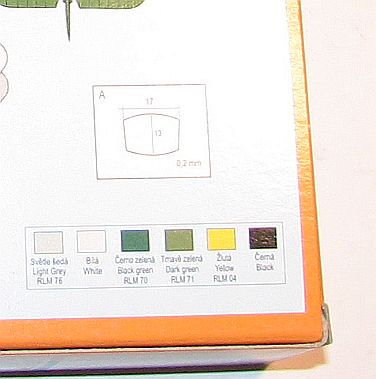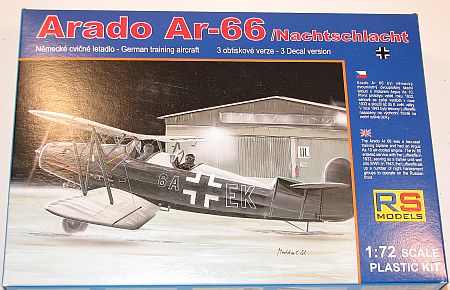
RS Models 1/72 Arado Ar 66
By Matt Bittner
Introduction
Unfortunately, like most German 'tweeners (between-the-war aircraft) there is little documentation on the Arado 66 (Ar 66). There are some sites that have information, and the following comes from Wikipedia (https://en.wikipedia.org/wiki/Arado_Ar_66):
"The Ar 66 entered service with the Luftwaffe in 1933, serving as a trainer until well into World War II[1]. In 1943, the Luftwaffe set up a number of night harassment groups to operate on the Russian front. The Ar 66, along with the Gotha Go 145, formed the main equipment of these groups."
And that's it. No numbers on how many built; no numbers on how many single-seat versus double-seat. It's a shame German 'tweeners aren't given the amount of documentation as other aircraft.
The Kits
I've decided to couple all three kits that were sent for review into one article because of the similarities in each box. The only aspect different between the three kits – aside from the box – are the decals. Otherwise everything is the same. There are 56 injected plastic pieces on two sprue and two clear windscreens (even with the single-seater). The printed instructions show the only differences being the "standard" two-seater or the two-seater with the "gunner stand"; the different exhausts (the night versions have longer exhausts); and the addition of bombs, if building one of the two-seat night bombers. Other than those, that's the only difference printed on the instructions. When it comes to the single-seater, there is a small diagram on the bottom of the box, showing the general outline and dimensions of the part that *needs to be built* in order to convert the model into a single-seater. Key points here. It's a small diagram (with curved sides) and not to true outline. At the very least they could have provided a true-scale diagram one could either cut from the box, or copy direct to plastic to make the single-seat plug. Or, better yet, provide a piece of resin the modeler could plug into the hole to create the single-seat fighter. Sure, as "true" modelers we would have no problem making the part ourselves, but to do that most accurately, a true-to-scale drawing would definitely help. Decals are nicely printed and appear in register. The following schemes are catered for:Ar-66C Two-seater:
- 2./NSGr. 12, Spring 1944, Liepaja airfield, Latvia
- Unknown Störkampfstaffel, Winter 1942-43, Eastern front
- 2./Stg Luftflotte 6, 1943, Baranovichi airfield, Belarussia
Ar-66 Legion Condor:
- Nationalist Spanish A.F, 1937
- Czechoslovakia, airfiled Prelouc, 1946
- Romania, was captured from the Luftwaffe, 1945
Ar-66 Single-seater:
- 4./NSGr. 2, Spring 1945, Deutsch Brod, Czechoslovakia
- NSGr. 8, Pori, Finland, Winter 1944
- Störkampfgruppe Luftflotte 1, Spring 1943, Eastern front
You'll need to decide up-front, if building a two-seater, which one you'll build. A "standard" one, or one with the "gunner stand". If you're building a "standard" two-seater than you'll glue all pieces of the cockpit together. If you're building the "gunner stand", then you'll need to perform some surgery and that surgery should be accomplished with the fuselage halves glued, or taped, together. There is a different fuselage top you'll need to glue on after you make the necessary cuts to the fuselage shown on the instructions. The difference in the cockpit assembly is leaving off the rear seat and control column, and not adding the back instrument panel.
You might also want to leave off the rear cockpit pieces if building the single-seater and keep those parts for the spares box.
Now the instructions have you add the tail pieces, exhausts, various fuselage bits-and-bumps, and the struts for the horizontal tail. I would leave off the exhausts and tail struts until after painting. The next step you add the lower wing and landing gear but again, landing gear should probably be left off until after painting. In fact, after adding the lower wing you could probably paint.Unfortunately there is no rigging diagram with any of the releases. You'll need to track down some photos of the Ar 66 to help you rig.
Conclusion
These are very nice kits and will build into excellent examples of the Arado Ar 66. Everything is top-notch and they should be relatively easy builds.
My thanks to RS Models for these kits to review.

